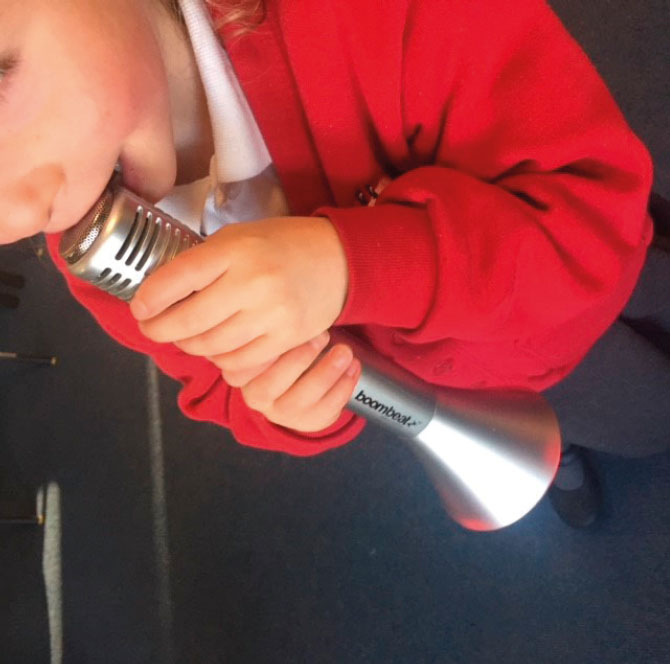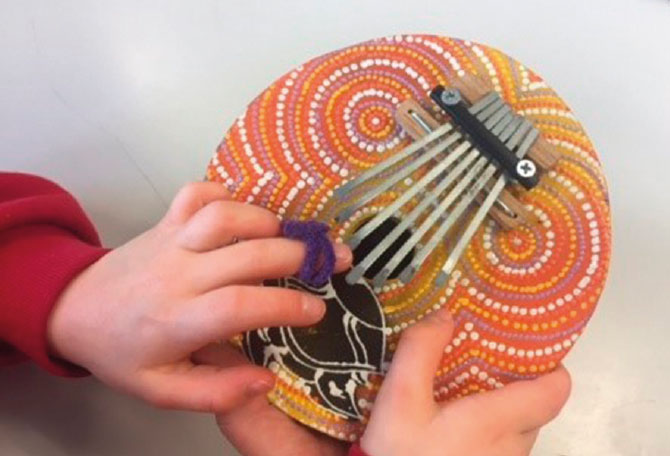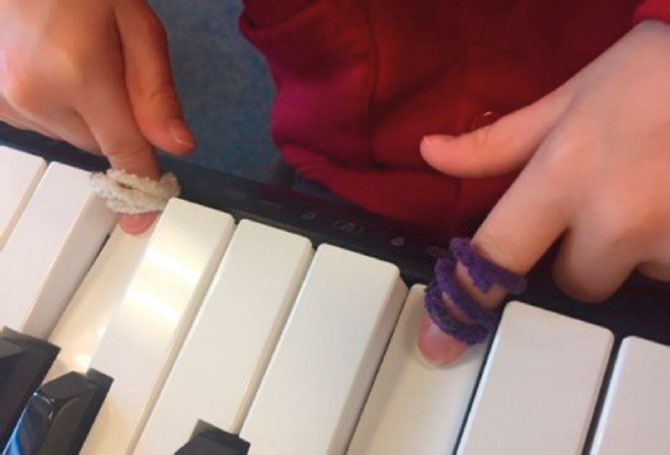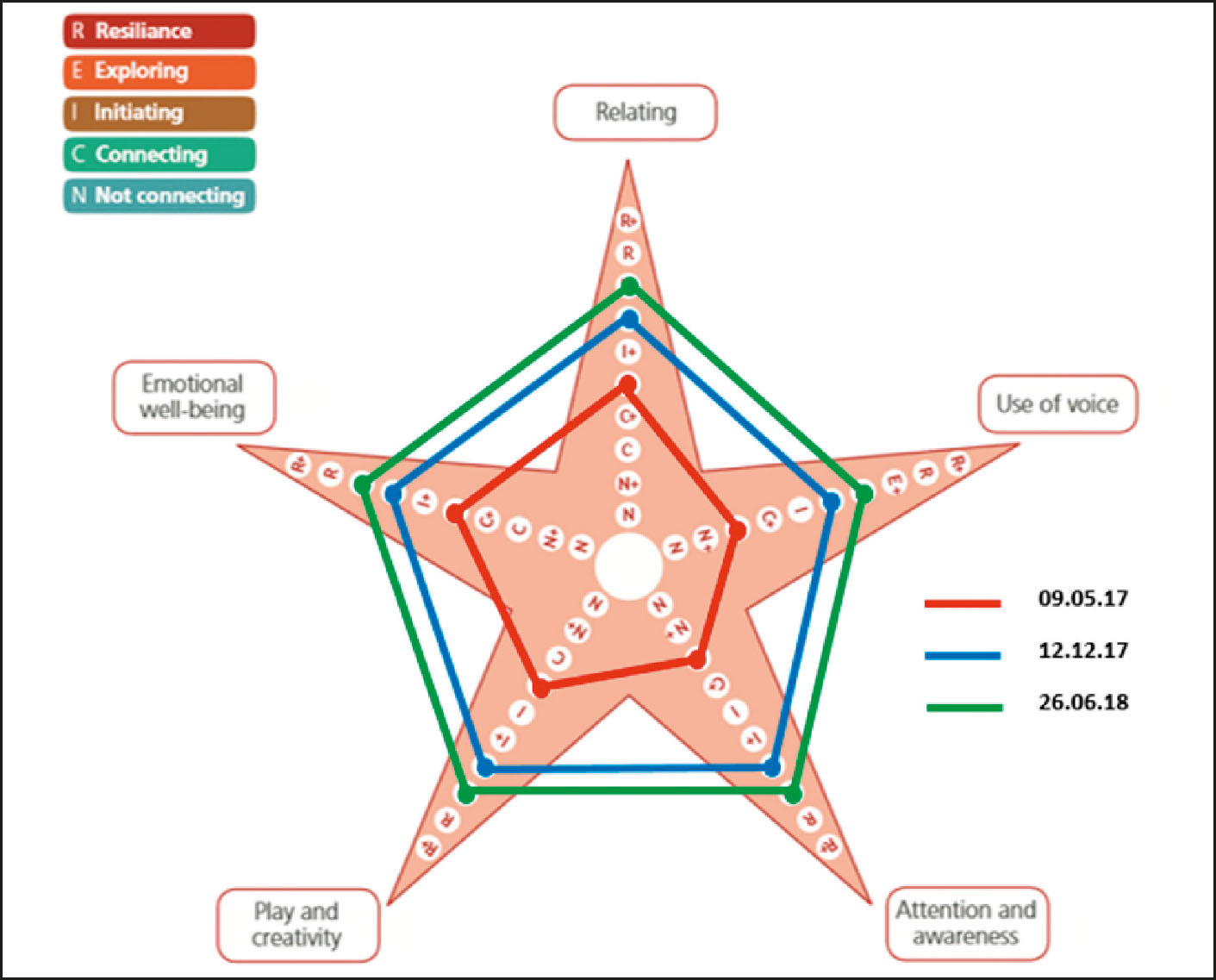Music therapy in practice
Amanda Dickson
Friday, February 1, 2019
The numerous benefits of music on learning and development are often spoken about at conferences and seminars across the country – but what does it look like in practice? Amanda Dickson from Chiltern Music Therapy gives us an introduction to music therapy in education.

Steve Lavelle
Music therapists are often asked what exactly it is that they do when working in educational settings. I hope to address this in the following article and also to provide an understanding of how music therapy can be integrated within a team in order to work collaboratively on a child's development and learning goals. It's certainly more than just shaking a tambourine…
What is music therapy?
Music therapy is a recognised allied heath profession and therefore sits alongside disciplines such as physiotherapy or speech and language therapy. To qualify, therapists must complete a two-year Master's degree in music therapy before registering with their professional body and the Health and Care Professions Council.
At Chiltern Music Therapy (CMT), music therapy is used to support people in four keys areas: social interaction and communication; emotion and behaviour; cognition and learning; and physical skills. In sessions, music-based activities, tasks, and exercises are therefore used as a tool to support functional, non-musical goals. Standardised clinical techniques are also used by those additionally trained in neurologic music therapy, an evidence-based, neuroscientific model of practice. CMT has the most experienced team of neurologic music therapists in the UK.
A case study
Music therapists work in both special and mainstream schools with children of all ages who present with a wide range of needs. The following case study provides a brief illustration of music therapy work in a mainstream primary school setting.
Background
Sophie is four years old; she is an active girl who enjoys singing, playing her electric guitar, listening to stories and being outdoors. At three years old, Sophie was referred to music therapy with the aim of assisting her development, more specifically her language skills, attention and cognition. As well as these needs, she also has a diagnosis of severe visual impairment. Alongside music therapy, Sophie has input from a speech and language therapist and an advisory teacher for the visually impaired.
Setting goals
An important practice for many music therapists is to set goals that tie in with the multi-disciplinary team and reflect the needs and aims of each client. These goals may be adapted over time, helping to benchmark progress. Once non-musical goals are established the aim is to create musical experiences that act as a vehicle for meeting those goals.
Some of Sophie's main goals include: supporting the development of her voice and language; developing social skills such as waiting, responding, leading and following; increasing her listening skills; supporting the use of a cane for walking; and learning to use a braille machine.
Communication with school staff, as well as ensuring shared goals and aims, helps to tie music therapy sessions in with learning activities taking place in Sophie's class and throughout the school. Therefore, regular conversations are held with the class teacher and learning support assistant to provide these links.
What happens in a music therapy session?
Music therapists use a range of musical styles, instruments, and activities within sessions, always tailored towards what is needed for individual clients. While specific activities are presented below, these have been part of overall flexible session frameworks, taking into account Sophie's own ideas, feelings, and requests. A combination of singing, instrumental play, improvisation and musical games all help to create a way to meet Sophie's goals through music and play.
Singing to support voice and language development
Sophie loves singing, so it was a natural step to use song to support her voice, language and social skills. A joint session, together with her speech and language therapist, was key in ensuring activities, aims and goals were linked with the team.
Drawing on Sophie's preferences by using favourite songs and nursery rhymes, helped to engage her in sessions. For example, adding other instruments, such as the guitar – which Sophie loves to strum and feel the resonance – and the microphone, which encouraged her to use her voice even more as she loves to hear her voice amplified. Sophie's confidence when singing and using her voice independently has developed during the course of music therapy. Furthermore, her language has gradually developed through the use of improvised songs, as she creates and sings lyrics that represent the events of her week.
Musical games to support listening
One of Sophie's favourite games is the ‘Musical Matching Game’, in which she is challenged to listen to and identify two or three instruments played in succession. She is then requested to play back the same instruments in the same order. Roles are then reversed, placing Sophie in the role of leader. This exercise is aimed at strengthening her ability to remember and identify objects through auditory cues, as well as developing her listening skills.

Strumming and feeling the guitar's resonance

Using the microphone's echo function
‘Musical Hide and Seek’ also draws on supporting Sophie's listening skills and helps her practise using her cane during sessions. The therapist ‘hides’ an instrument in the classroom, Sophie then walks around the room, while using her cane, trying to find the instrument. She listens for musical cues to determine whether she is walking towards or away from the instrument.

Two sets of the same instruments for the Matching Game

Wind chimes used in the Musical Hide and Seek game

Instrument play to develop skills needed for the braille machine


Support with identifying fingers when naming them by using instruments

Music Therapy Outcome Star
Sophie is currently learning to use a braille machine, but first must learn to isolate, identify and use her thumb and fingers. Her visual impairment teacher has introduced the song ‘Tommy Thumb’ to encourage this, placing pipe cleaners on the fingers Sophie is focussing on learning. This activity has been transferred into music therapy sessions with the use of instruments. The keyboard and mbira provide auditory and sensory feedback, while helping Sophie to identify, name and strengthen her fingers, all in preparation for her learning to use the braille machine.
How do we show change in music therapy?
Music therapists always write notes at the end of each session in order to document key moments that might exemplify progress or areas that need further attention, as well as to plan ahead.
Specific outcome measures may also be used to relay any change back to the multidisciplinary team and family. These outcome measures depend upon the setting and client one is working with. In the case of Sophie, the Music Therapy Outcome Star has been used. This is a validated tool appropriate for children of all ages and needs, and allows for change to be assessed, recorded and shared with professionals and family. While a full explanation of the star warrants an article of its own, its visual representation can be seen here. The visual component is accompanied by detailed notes taken under specific domain areas of need, which are then mapped against the star. Change is represented over time, as the lines drawn gradually reach out towards the star's points from its centre.
Conclusion
The above case study is just one example that we could give to demonstrate how music therapy might be used in a school setting. Goals and activities will be different for every child, depending on their interests and ability, and will also depend upon the approach taken by the music therapist. Overall however, the notion of music to address social interaction and communication, emotion and behaviour, cognition and learning, and physical skills is universal. A key point to take away is the importance of communication between music therapists and other professionals to ensure the child's needs and goals are being supported from all angles.
Chiltern Music Therapy maintains an ethos of work which is collaborative, client-centred and evidence-based. Music therapists from the organisation work in schools throughout England, as well as in a wide range of settings such as hospitals, care homes, community centres, hospices and in individuals’ homes. For more information on the work that we do please go to chilternmusictherapy.co.uk
Note: The Music Therapy Outcome Star was developed by Triangle Consulting Social Enterprise in 2011.

